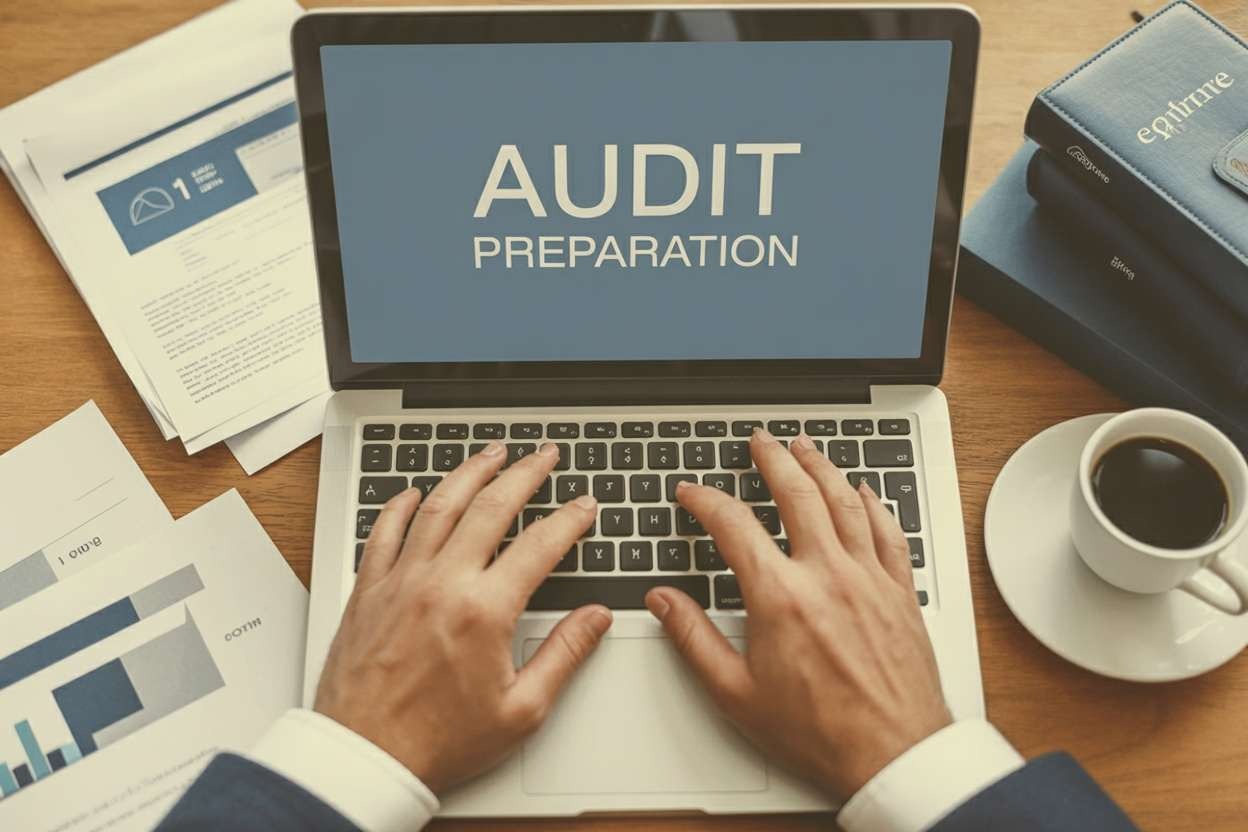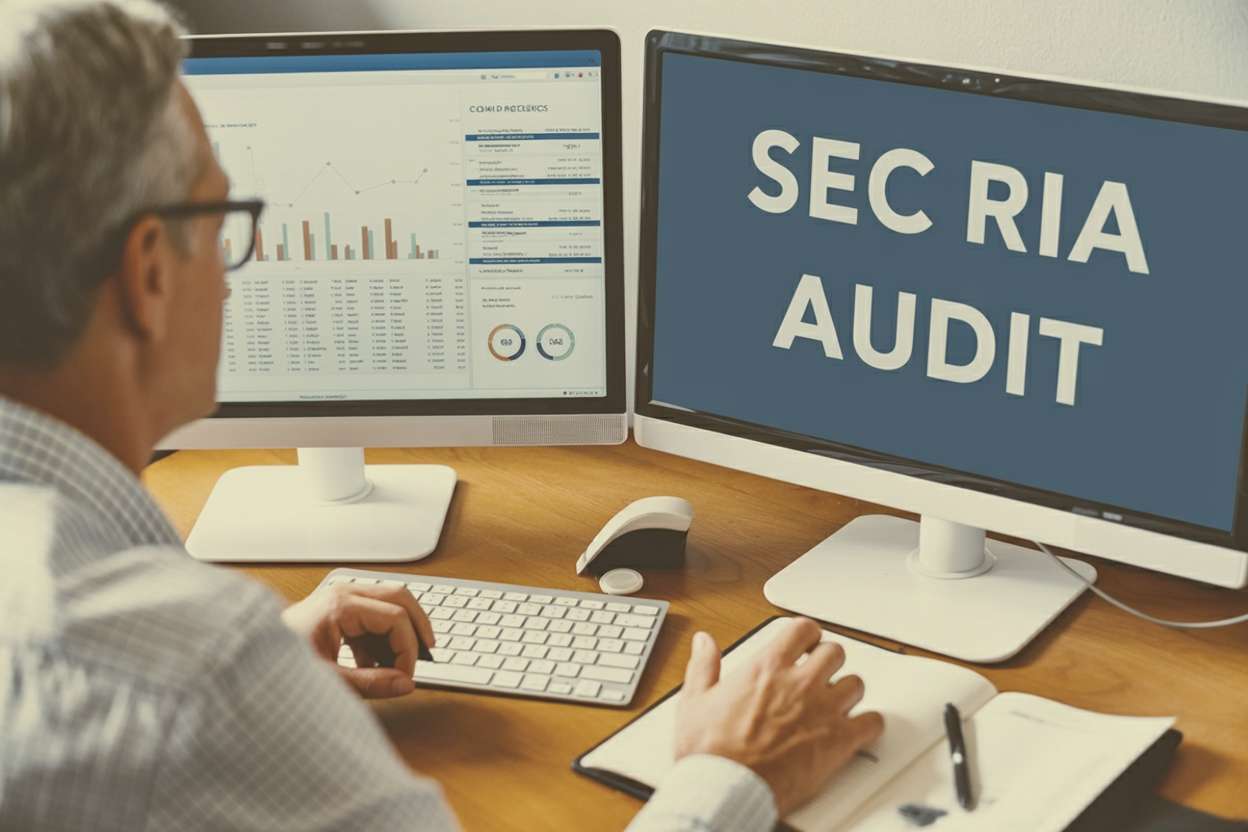The phone rings while you're probably in the middle of a client meeting or maybe reviewing some portfolio allocations, and it's the SEC letting you know they'll be conducting an examination starting in 10 business days. Most firms respond by basically dropping everything else and going into what can only be described as panic mode, where everyone stays late trying to piece together documents and update policies that should have been current all along but somehow kept getting pushed to next month's to-do list.
What the data shows is that this last-minute scrambling method doesn't really work anymore, if it ever did. Actions against investment advisers went up to 97 in fiscal 2024 from 86 the year before, even though the SEC's overall enforcement numbers actually dropped. State regulators have been plenty active too, opening 404 new investigations into investment advisers just in 2023. And when you look at the SEC's 2025 Examination Priorities, they're clearly focused on things like AI usage and cybersecurity and private fund operations, which means firms that are still doing the cramming thing are probably going to have a rough time.
Some firms have figured out that if your compliance systems are working correctly all the time, an exam becomes more like a routine checkup instead of a crisis where you're hoping examiners don't find all the gaps you know are there but haven't had time to fix. Let’s try to figure out how to improve SEC exam preparedness with this guide.
The Exam Process Has Changed
Frequency and Selection
Around 15% of all RIAs get examined each year as of 2023, and the selection process isn't random anymore like it maybe used to be. The SEC has deployed pretty sophisticated analytics tools over the past several years, things like ARTEMIS and NEAT that can process years of trading data in minutes instead of the weeks it used to take to manually review even a fraction of a firm's transactions.
So what this means is the Division of Examinations is using what they call "modern quantitative techniques" to figure out which firms look riskier based on patterns they're seeing in regulatory filings and operational data. The SEC can spot potential problems in fee billing or marketing materials that your own manual compliance reviews probably miss because they have better tools than most RIAs can afford, which creates this situation where regulators might know more about your firm's risk profile than you do.
The Four Exam Types
Routine exams are what most firms face, where examiners do a comprehensive look at your entire compliance program, and if you're newly registered you can expect one within the first 18 months or so of operation. Sweep exams focus on specific topics across multiple firms simultaneously to understand how the industry is handling something like the Marketing Rule or cybersecurity requirements. For-cause exams get triggered when something specific catches regulatory attention, maybe a whistleblower tip or a customer complaint or something odd in a filing, and these tend to be pretty intensive because examiners already think there might be issues worth digging into. New registrant exams are basically routine exams but specifically for firms that recently registered, where the SEC wants to see if you set things up correctly from the start.
The problem is you don't get to choose which type shows up, so being prepared means having systems that can handle whatever level of scrutiny arrives at your door.
Why the Old Way Fails
The Scramble
When the exam notice comes in, firms typically shift into emergency mode where the CCO becomes a project manager for several weeks, pulling people away from client work and business development to search for documents and review policies. People work late and give up weekends trying to find files that should be organized but are scattered across different systems or buried in someone's old emails.
The costs add up faster than most firms realize because they're focused on just getting through the exam instead of calculating all the ways it's affecting operations. Principals end up spending 100 hours or more on exam prep, and for smaller RIAs under $500 million in assets the direct cost runs around $70,000 before any remediation work starts. If the SEC issues deficiency letters, which seems to happen at most firms based on their initiative data, total costs can exceed $100,000 once you add in extra legal fees and consultant time and ongoing monitoring requirements.
What doesn't get captured in those numbers is the opportunity cost of deals that didn't close because principals were unavailable for prospect meetings, or client issues that went unaddressed because advisors were pulled into document reviews, or strategic projects that sat on hold while everyone focused on exam preparation.
Common Deficiencies
The SEC and state regulators keep finding the same problems year after year, which tells you something about how most firms are running their compliance programs. Books and records failures showed up in 17% of all deficiencies during a 2023 state regulator sweep, with issues like missing client information and unsigned contracts and poor documentation of investment decisions.
Form ADV disclosures are frequently inaccurate when examiners review them, where assets under management don't match internal records or conflicts of interest exist but never made it into disclosure documents or services described in Form ADV don't align with what's in client agreements. Compliance program deficiencies under Rule 206(4)-7 are the most common topic in deficiency letters, happening when your RIA compliance manual is basically a generic template that doesn't reflect how the firm actually operates, or when the CCO doesn't have enough resources to enforce the policies that exist on paper.
Fee calculation errors get serious attention because they directly harm clients financially, and the SEC found fee problems at "most" firms during one targeted initiative. Code of Ethics violations appear regularly too, with access persons not properly identified or personal trading reports submitted late or not at all, or reports that get submitted but nobody actually reviews them.
These problems all happen because manual processes break down in predictable ways, where someone forgets to update a form or a spreadsheet has the wrong formula or policies sit in binders but aren't followed in daily operations.
Continuous Compliance Through Technology
Why Always-Ready Firms Win
Firms that have built systems to maintain compliance continuously have changed their entire relationship with regulatory examinations by staying compliant all the time instead of scrambling to pull everything together when examiners announce they're coming. When your systems genuinely maintain compliance daily, an SEC exam becomes more of a validation exercise where examiners verify your processes match your documentation, which is quite different from the typical exam where firms are explaining gaps that manual reviews failed to catch.
The benefits go beyond just avoiding fines or deficiency letters and affect how the entire firm operates. Teams maintain focus on actual work instead of getting pulled into fire drills whenever regulatory scrutiny appears. CCOs can spend time on strategic improvements and staying ahead of regulatory changes rather than managing document collection projects. A clean regulatory record becomes useful in business development, particularly with institutional clients who research an adviser's regulatory history before committing capital.
Some E&O carriers offer premium discounts to firms that conduct regular mock exams and demonstrate strong controls, which directly reduces costs. And maybe most important for growing firms, compliance infrastructure built on automation scales naturally with the business, letting you add advisors and clients and grow assets without the framework collapsing the way manual systems do when firms hit certain growth thresholds.
How Technology Changes Things
The shift toward an AI CCO model represents a fundamental change in compliance monitoring, moving from backward-looking periodic reviews to forward-looking real-time oversight that prevents problems before they occur instead of just documenting them afterward. Platforms like Luthor can scan communications automatically and continuously, flagging potential SEC Marketing Rule email violations or unsubstantiated claims when they're created instead of months later during an annual review when the content has already been distributed.
Automated policy systems centralize compliance documentation and track what needs updating when regulations change, eliminating the problem where SEC guidance gets released but firms don't update relevant documentation because nobody remembered all the places that guidance affects operations. These systems can also monitor for violations in real time, sending alerts to the CCO if someone tries to trade a restricted security or do something else that violates firm policies, which means violations get prevented rather than discovered weeks or months after they occurred.
Smart document management connects Form ADV, client contracts, CRM, and billing software into an integrated system that flags inconsistencies when changes get made in one place but don't get reflected everywhere. If a fee schedule updates in a client agreement, the system checks whether that creates a discrepancy with the fee structure in Form ADV and alerts someone to resolve it before it becomes an exam finding, preventing the billing errors that draw SEC attention because these errors impact clients financially.
Continuous testing replaces the annual compliance review that provides a snapshot on one day while missing issues developing during the other 364 days. Automated systems perform checks daily or more frequently to verify every new account has required documentation, confirm access persons submitted quarterly reports on schedule, and reconcile billed fees against contracts quarterly instead of waiting for annual reviews to catch discrepancies.
90-Day Implementation Game Plan

Month 1: Assessment
The first phase involves an honest assessment of where compliance currently stands, which might be uncomfortable when you start documenting gaps and workarounds but is necessary to fix problems before regulators find them. This gap analysis should compare actual daily practices against RIA compliance requirements and common deficiency areas that appear repeatedly in exam findings.
Using the SEC's annual Examination Priorities as a diagnostic checklist helps identify which operational areas present the highest regulatory risk based on what examiners are actually focusing on in the current cycle. The critical part involves documenting what actually happens in practice rather than what policies say should happen, which requires talking to staff about real workflows, mapping how tasks get completed daily, and identifying spreadsheets and workarounds people created to get around limitations in official systems.
Month 2: Build Infrastructure
Once you understand where compliance gaps exist and how current processes fall short, the next phase involves selecting and implementing core technology infrastructure for continuous monitoring. This means choosing an RIA compliance software platform that handles automated surveillance, policy management with version control, and document management that integrates with existing systems.
But technology deployment is only part of what needs to happen because software alone doesn't fix organizational issues around compliance. The entire team needs training not just on using new tools but understanding why the firm is making this investment and how these systems make daily work easier rather than creating more administrative burden. Shifting culture so compliance becomes integrated into everyone's workflows instead of something only the CCO worries about probably takes longer than actual technology implementation.
Month 3: Test
The final phase involves stress-testing new systems and processes before actual examiners evaluate your program, which means bringing in experienced consultants to conduct a comprehensive mock exam that simulates the real thing. Mock exams typically cost around $5,000 depending on firm size, which is relatively small compared to having actual examiners identify problems that need remediation under regulatory oversight.
Findings from a mock exam expose weaknesses that weren't apparent during implementation, providing opportunity to fix what's broken, refine inefficient workflows, and deliver targeted follow-up training to staff still struggling with certain aspects.
The Business Case
Traditional Cost
The traditional method carries costs beyond obvious consultant fees and legal bills. Hidden costs include hundred-plus hours of principal time diverted from strategic development, firm-wide productivity losses when everyone shifts focus to exam prep, and opportunity cost of deals that never close because principals weren't available for prospect meetings. When deficiency letters get issued, which happens at most firms based on SEC data, remediation pushes total impact past $100,000 accounting for additional legal and consulting fees plus ongoing monitoring requirements.
Technology ROI
Market adoption provides strong evidence for the business case, with the global RegTech market valued at $15.80 billion in 2024 and projected to reach $82 billion by 2032, representing 22.8% annual growth. North American firms account for 32% of this market, indicating widespread adoption among US and Canadian RIAs.
Returns appear in multiple ways. One bank that automated KYC documented 37% improvement in case handling time, translating to lower staffing costs and faster onboarding. Another firm reduced compliance personnel by 33% after implementing platforms that handled routine monitoring through automation. A global bank deploying AI for transaction monitoring saved an estimated $50 million annually in staffing by eliminating manual review of alerts the AI processed automatically.
Industry estimates suggest potential returns exceeding 600% with payback under three years, though results vary based on firm size, complexity, and how manual starting processes were.
What Triggers Scrutiny
The SEC's selection methodology is sophisticated and uses proprietary algorithms they don't fully disclose, but focus areas get laid out in annual Examination Priorities. AI and emerging technology usage receives intense attention, with 2025 priorities making clear examiners want to understand whether firms using AI tools actually comprehend their systems well enough to supervise them appropriately.
Never-examined firms remain a priority because the SEC assumes firms without regulatory scrutiny might have developed practices that need correcting. Private fund advisers face heightened frequency due to complex fee structures, illiquid investment valuation challenges, and potential conflicts of interest, with 2025 priorities dedicating a section specifically to these examinations.
Rapid growth raises flags because compliance infrastructure might not have scaled with expanding operations. Cybersecurity remains a perennial focus, particularly for firms with multiple offices, heavy third-party provider reliance, or policies that haven't been updated or tested recently.
Final Thoughts
Being perpetually exam-ready comes down to building infrastructure that maintains genuine compliance daily rather than assembling evidence when regulators announce they're coming. When the SEC has data analytics capabilities analyzing years of data in minutes, the effective defense is deploying systems that perform continuous monitoring rather than relying on periodic manual reviews that miss problems developing between cycles.
Most RIAs continue running compliance traditionally because change feels risky with regulatory oversight, and current systems seem adequate until tested by actual examiners. But the gap between firms with modernized infrastructure and firms using manual processes grows wider each year as regulatory expectations evolve. Technology exists to transform compliance from reactive cost center to proactive risk management that protects business value, and the ROI has been demonstrated across enough implementations that you can probably find case studies from similar firms.
What typically prevents the transition is that it looks like a major project disrupting operations, current systems appear functional, and there's always something feeling more urgent. But the SEC doesn't adjust examination schedules to accommodate when firms feel ready, and if systems aren't maintaining compliance when that call comes, those 100 hours of time and $70,000 to $100,000 in costs are waiting regardless of whether you planned to address modernization this quarter or next year.
Luthor's AI-powered platform automates monitoring systems keeping firms exam-ready year-round rather than just weeks before examiners arrive, helping RIAs automatically review marketing materials for compliance issues before distribution. If you're considering moving away from the exam stress cycle and want to understand how modern compliance technology might work for your situation, you can schedule a demo to learn about transitioning to continuous monitoring.



.jpeg)
